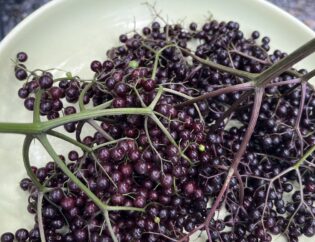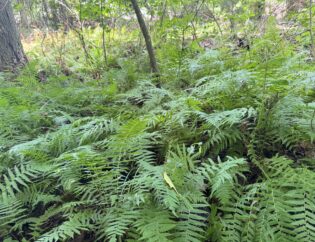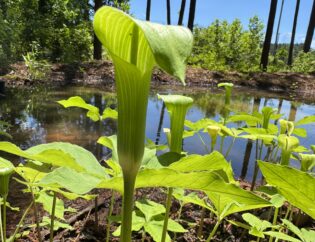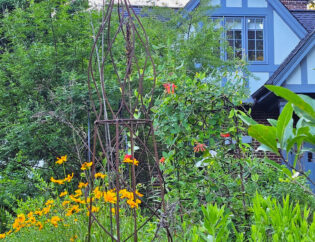
2 ½ inches rain this week.
Typical winter in Georgia, what is going to keep our compost and mulch from running downhill in the rain? CWD (Coarse Woody Debris)
Mike and I finished lining the down hill side of each of the propagation beds in the East Field with dead logs, or coarse woody debris (CWD). Placing dead logs on the downhill side of each bed to helps keep compost and mulch from washing downhill, but also has many beneficial qualities to lend to your garden soil.
Three important reasons to use coarse dead wood:
1. The decayed wood serves as a reservoir for moisture. Larger pieces of dead wood have a more significant moisture retaining capacity than smaller pieces, and release this moisture to the soil slowly throughout dry spells. Large woody debris improves the overall moisture retention and structure of soil.
2. This moisture retaining capacity of dead wood also creates an important refuge for beneficial organisms like mycorhizzae, allowing them to retreat into the moist wood and survive dry spells; these organisms will more effectively recolonize soils when conditions improve.
3. As fungi and decomposer species of mushrooms break down the log, the decomposition activity can actually increase the amount of nitrogen, potassium and phosphorus that the deadwood holds. Insects and other wood-eating arthropods digest (with the help of micro-organisms) the complex organic molecules that make up wood, and return this more accessible, simplified nutrient matter back to the soil as droppings (or frass).
Eventually the logs will become soil themselves.
Work cited:
“The Ecological Role of Coarse Woody Debris.” EcoForestry, the Art and Science of Sustainable Forest Use. Ed. Drengson, Alan Rike and MacDonald Taylor, Duncan. Gabriola Island, New Society Publishers. 1997. 91, 92.
There is also a good article on Coarse Woody Debris and it’s importance on Wikipedia.









